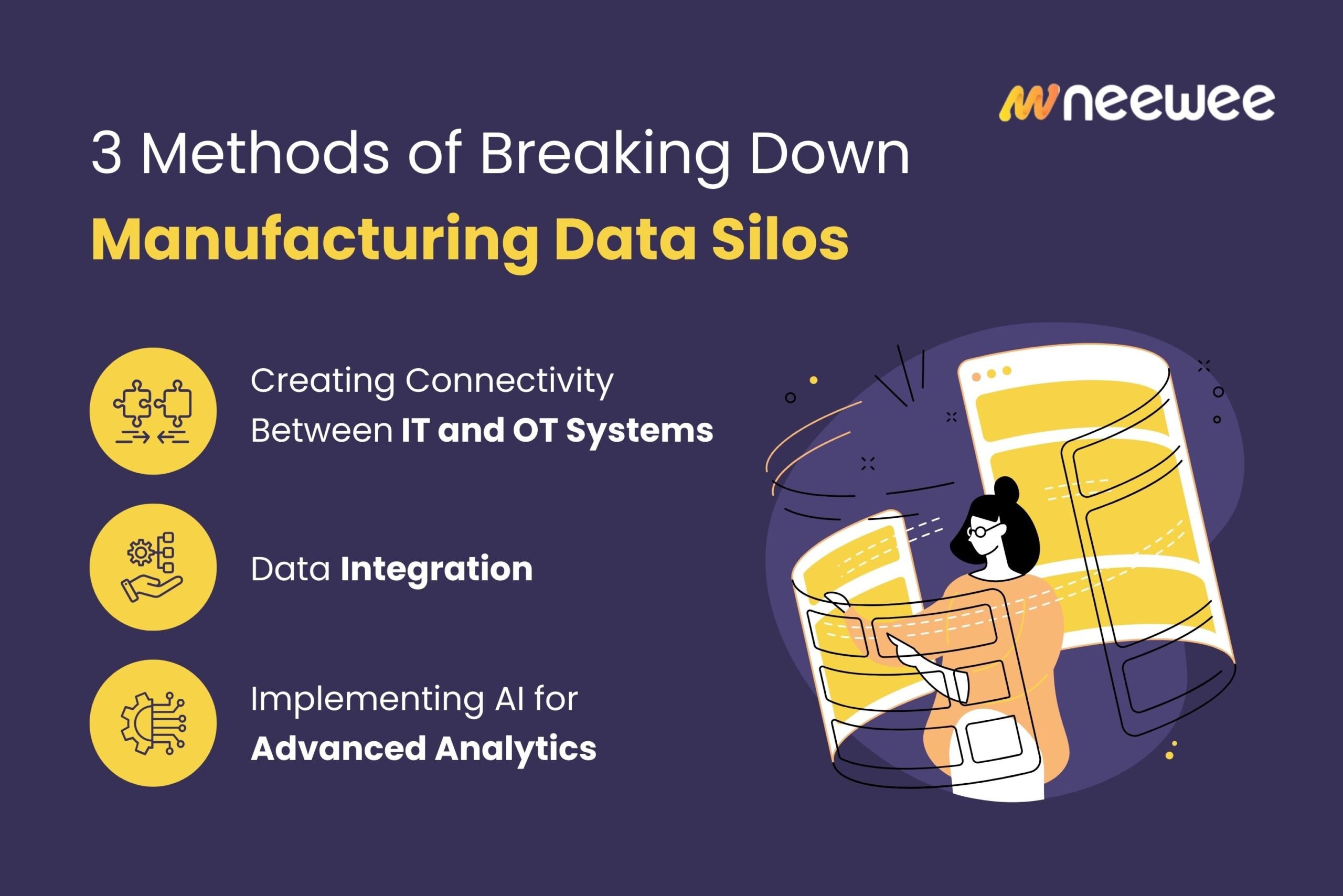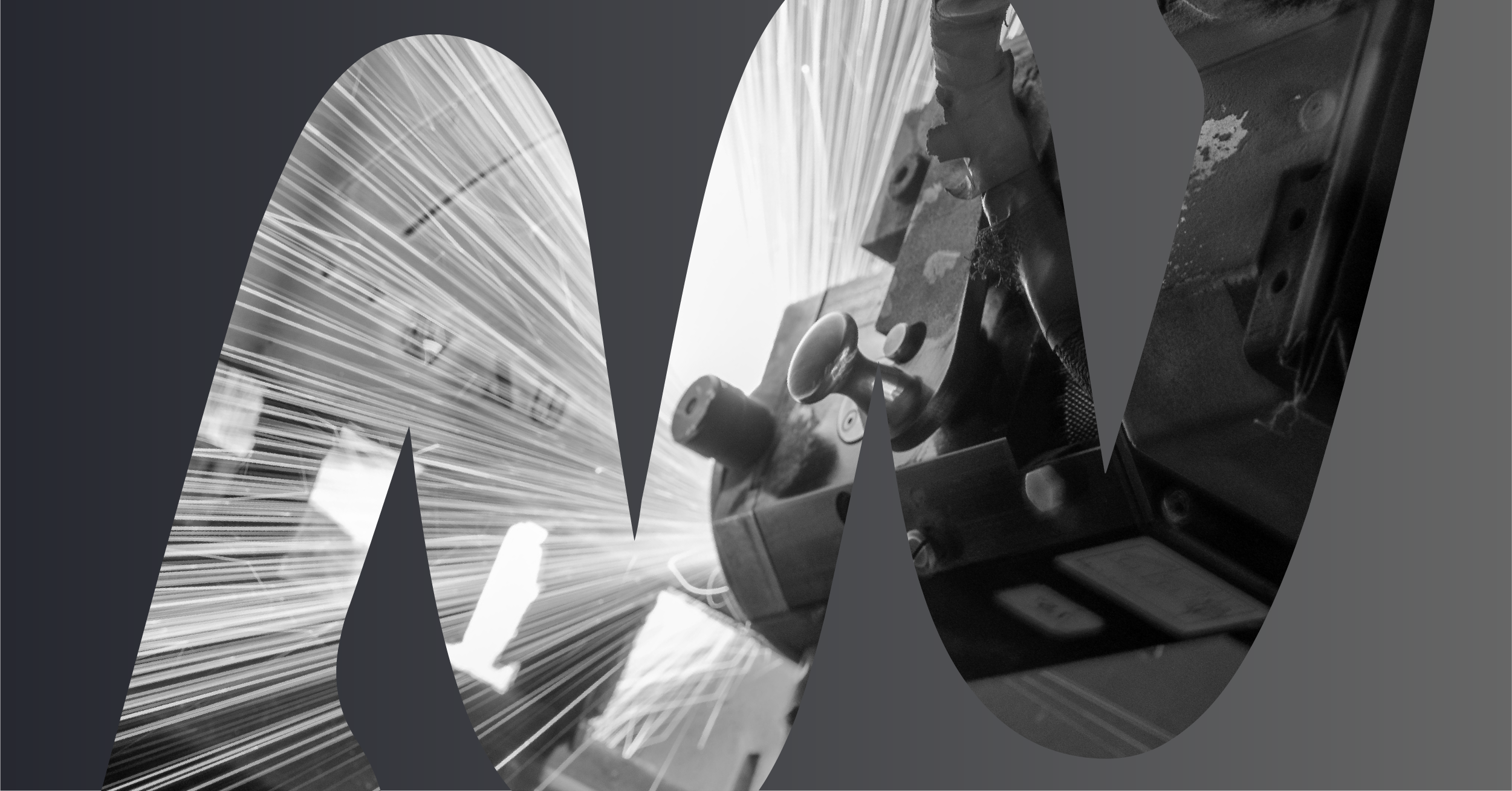What Are Data Silos?
Imagine the bulk material you need is locked away in a chamber, and you cannot access it. How will you know its exact volume and value? You can neither utilize nor share it unless you can break down the barriers. A data silo in the manufacturing industry is a bulk amount of inaccessible production data that could be of great value when used for deriving business intelligence.
How Do Data Silos Arise and Hamper Manufacturing?
There are many reasons why data silos occur. It could be anything—from a technological drawback on the factory floor to the lack of awareness about the downsides of siloed operations. A company may store data in multiple separate databases and different formats. Data becomes siloed and is not conveniently accessible as and when required by the various production teams.
Historical production data locked away in a silo could cost you even more than the expenses involved in creating connectivity and adopting Smart Manufacturing methods. Data silos could mean lost opportunities for improving production efficiency and optimizing productivity.
Delaying the efforts to break down data silos could lead to increased manufacturing costs due to inefficiencies and sub-optimal production. If the production teams do not get the required relevant information, they do not have complete visibility to make the right decisions at the right time. For larger manufacturing plants, there are more complexities to manage. If production data remains in countless different silos here, it would only mean that nobody has the complete picture. Eventually, any decision based on partially understood data or without considering a portion of relevant data would prove to be a risk.
You lose 20-30% in revenue every year due to inefficiencies. According to the report by IDC Market Research, the inefficiencies involve making decisions based on incorrect data to acting on old data. The root cause of these inefficiencies is data silos.
3 Methods of Breaking Down Manufacturing Data Silos
The Fourth Industrial Revolution is driving businesses toward modernization and optimum production efficiency. By leveraging data with the help of IR4 technologies, manufacturers can gain business intelligence and unlock their maximum potential capacity.
Whether organizational or technological data silos, IR4 initiates us to the three ways of breaking them down:
- Creating Connectivity Between IT and OT Systems
As the name suggests, Information Technology (IT) systems typically handle data, while Operational Technology (OT) systems are for monitoring and controlling production and processes. In the past, the two systems were relatively isolated and functioned separately. Now different technologies and protocols facilitate connectivity and data communication, creating interoperability of the machines. IT and OT convergence, better known as The Internet of Things (IoT) is instrumental in breaking down silos. When it is only about the manufacturing facility, it is called the Industrial Internet of Things (IIoT).
Manufacturers can thus obtain data from different OT devices for integration and analysis. With un-siloed data, you get a more holistic view of the operations to make better-informed decisions. IT/OT convergence opens up a whole new world of possibilities for utilizing data and technology to improve efficiency and productivity.
- Data Integration
Data integration is a hot topic as more and more companies realize its benefits. Data integration helps break down silos by bringing data together and storing it in one place, making it easily accessible to all parties who may need to derive logic and intelligence.
Information about how the manufacturing unit is performing, the KPIs at different stages of production, and what needs improvement is crucial to business intelligence. With the help of data integration, a company can make faster and better decisions based on all available production data and BI gained.
- Implementing AI for Advanced Analytics
IR4 technologies like Artificial Intelligence (AI) in manufacturing can simplify and speed up the demolishing of data silos. Not allowing data to languish in silos is especially important to create value. A McKinsey report has confirmed that Reinforcement Learning is a promising new technique for overcoming data bottlenecks. Implementing AI/ML for advanced industrial analytics will help make sense of historical data previously underutilized due to data silos.
AI enables the easy upload of data in any format. Or the data from your ERP systems can also get integrated quickly. Accurate data visualization and actionable insights provided by AI/ML empower the production planning and execution teams with in-depth visibility of shop-floor activities in real time. Instead of wasting time speculating, prescriptive analytics can provide precise guidance to optimize available resources—manpower, machines, and materials. AI can enrich your Master data and generate an optimized production schedule, unlocking hidden production capacity.
Benefits of AI Enabled Eradication of Data Silos
Manufacturing is a highly coordinated and collaborative business. Data silos do not allow factory floor data from different departments to work together, hindering efficient manufacturing. With AI-enabled eradication of data silos, all workflows get synchronized in real-time, leaving very little scope for errors. Dynamic AI transforms production scheduling, speeding up the processes and optimizing efficiency.
References:
[1] Thought Leadership. (2021, February 25). Your Company Is Losing 30% Of Revenue Annually. Here’s Why. Trabeya. https://www.financialexpress.com/industry/festive-season-to-drive-consumer-spending-48-will-shop-more-during-2022-festive-season-vs-2021-says-axis-survey/2655710/
[2] Mckinsey. (2019). Driving impact at scale from automation and AI. https://economictimes.indiatimes.com/tech/technology/online-festive-sales-excluding-smartphones-grow-28-in-first-two-days/articleshow/94439403.cms





